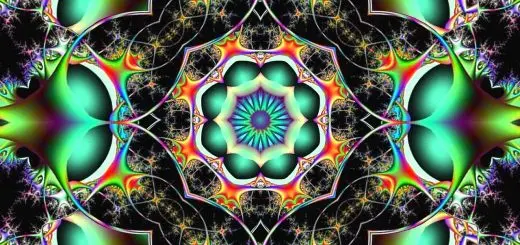Lunar New Year Insights: Celebrating the Chinese Zodiac Cycles

Looking for more amazing products? Check out our online store and explore our collection here! Happy shopping!
Before diving in, please note: This post is for informational purposes only. If you’d like to know more about how we approach topics, feel free to check out our friendly Disclaimer Page.
Hey there, amazing readers! 
We’re committed to delivering quality posts, and your support (even just sticking around despite the ads) means everything to us. So, bear with us, and thanks for helping us keep the good vibes rolling. Now, on to the fun stuff!
TRANSLATE BUTTON AT THE END OF THE ARTICLE
A Quick Overview
Lunar New Year, also known as Chinese New Year, is a significant cultural holiday celebrated by millions of people around the world.
This festive occasion follows the lunar calendar, typically falling between late January and mid-February.
One of the most intriguing aspects of Lunar New Year is the Chinese Zodiac, which consists of 12 animal signs that rotate on a 12-year cycle.
Each year is associated with a specific animal, with its own unique characteristics and symbolism.
Understanding the Chinese Zodiac cycles can provide valuable insights into the traditions, customs, and beliefs surrounding Lunar New Year celebrations.
Exploring the Chinese Zodiac Cycles
The Chinese Zodiac is deeply rooted in ancient Chinese astrology and mythology.
Legend has it that the Jade Emperor invited animals to participate in a race, with the order of the zodiac animals determined by their arrival at the finish line.
The Rat, Ox, Tiger, Rabbit, Dragon, Snake, Horse, Goat, Monkey, Rooster, Dog, and Pig make up the 12 zodiac animals.
Each animal is believed to influence the personality traits and destiny of individuals born during its corresponding year.
Origins of the Lunar New Year
The origins of Lunar New Year can be traced back thousands of years to ancient China.
This tradition is steeped in cultural and religious significance, with practices aimed at warding off evil spirits and welcoming good fortune.
The festival marks the end of winter and the beginning of spring, symbolizing new beginnings, renewal, and prosperity.
Families gather to pay respects to their ancestors, exchange gifts, and enjoy festive meals together.
Understanding the 12 Zodiac Animals
Each zodiac animal has its own unique characteristics and symbolism.
For example, the Rat is associated with intelligence and resourcefulness, while the Tiger represents courage and strength.
People born in a particular zodiac year are believed to possess the traits of that animal, shaping their personality and influencing their relationships and career paths.
Understanding the characteristics of the 12 zodiac animals can provide valuable insights into one’s own strengths and weaknesses.
Significance of Zodiac Compatibility
In Chinese astrology, the compatibility between different zodiac animals plays a crucial role in relationships and partnerships.
Some animals are considered more compatible with each other, while others may clash.
For example, the Rat and the Dragon are believed to have a harmonious relationship, while the Rat and the Horse may face challenges.
By understanding zodiac compatibility, individuals can make informed decisions in their personal and professional lives.
Traditions and Customs of Lunar New Year
Lunar New Year is a time of rich cultural traditions and customs.
Families clean their homes to sweep away bad luck and make way for good fortune.
Red decorations are hung to ward off evil spirits, while firecrackers are lit to scare away negativity.
Lion and dragon dances are performed to bring luck and prosperity, and traditional rituals are conducted to honor ancestors.
These traditions create a festive and auspicious atmosphere during Lunar New Year celebrations.
Symbolism of Lunar New Year Decorations
Decorations play a significant role in Lunar New Year celebrations, with each item carrying its own symbolic meaning.
Red is the predominant color, symbolizing good luck and happiness.
Peonies represent wealth and prosperity, while tangerines and oranges symbolize abundance and good fortune.
Chinese characters such as "福" (fu) meaning "good fortune" are commonly displayed upside down to signify the arrival of blessings.
These decorations create a festive and auspicious ambiance during the holiday season.
Festive Foods and Their Meanings
Food plays a central role in Lunar New Year celebrations, with special dishes prepared to symbolize good luck, prosperity, and abundance.
Dumplings, symbolizing wealth and prosperity, are a popular choice.
Fish represents surplus and prosperity, while noodles symbolize longevity.
Tangerines and oranges are served for luck, while sticky rice cake signifies a rise in fortune.
These traditional foods are eaten during Lunar New Year to bring blessings and good fortune for the year ahead.
Red Packets: Symbol of Prosperity
One of the most anticipated traditions during Lunar New Year is the giving and receiving of red packets, known as "hongbao" in Mandarin.
These red envelopes contain money and are given to children, unmarried individuals, and employees as a symbol of good luck and prosperity.
The amount of money placed in the red packet is usually an even number, as odd numbers are associated with funerals and bad luck.
Red packets are a token of good fortune and blessings for the recipient.
Fireworks and Lion Dances: Cultural Highlights
Fireworks and lion dances are iconic cultural highlights of Lunar New Year celebrations.
Fireworks are believed to scare away evil spirits and bring good luck for the year ahead.
Lion dances, performed by dancers in vibrant lion costumes, are meant to bring prosperity and good fortune.
The loud music, elaborate dance moves, and intricate lion costumes create a lively and festive atmosphere during Lunar New Year festivities.
These cultural traditions add excitement and energy to the holiday celebrations.
Predictions and Superstitions for the New Year
During Lunar New Year, many people consult fortune tellers or read horoscopes to obtain insights into what the year holds for them.
Superstitions abound, with beliefs about lucky and unlucky omens shaping people’s behaviors and decisions.
For example, breaking a mirror is considered bad luck, while finding a coin on the ground is seen as a sign of prosperity.
These predictions and superstitions add an element of mystery and anticipation to Lunar New Year celebrations, guiding individuals in their actions and decisions.
Modern Celebrations of Lunar New Year
In modern times, Lunar New Year celebrations have evolved to include a blend of traditional customs and contemporary practices.
People around the world participate in parades, cultural performances, and festive events to mark the occasion.
Shopping malls are adorned with Lunar New Year decorations, and businesses offer special promotions and discounts.
Social media platforms are flooded with greetings and well-wishes, connecting people from diverse backgrounds in the spirit of unity and celebration.
Global Impact of Lunar New Year Celebrations
Lunar New Year celebrations have a significant global impact, with millions of people of Chinese descent around the world marking the occasion.
Major cities host parades, fireworks displays, and cultural festivals to commemorate the holiday.
In countries with large Chinese populations, such as Singapore, Malaysia, and the United States, Lunar New Year is a public holiday celebrated with great fanfare.
The cultural significance of Lunar New Year transcends borders, bringing people together in a spirit of unity and festivity.
Conclusion
Lunar New Year is a time of joy, renewal, and celebration for millions of people around the world.
The Chinese Zodiac cycles add a layer of intrigue and symbolism to the festivities, offering insights into personality traits, relationships, and destiny.
Understanding the traditions, customs, and beliefs surrounding Lunar New Year can enrich one’s experience of this auspicious holiday.
As we welcome the Year of the Ox, may prosperity, good fortune, and happiness abound for all.
Happy Lunar New Year!

The Enlightenment Journey is a remarkable collection of writings authored by a distinguished group of experts in the fields of spirituality, new age, and esoteric knowledge.
This anthology features a diverse assembly of well-experienced authors who bring their profound insights and credible perspectives to the forefront.
Each contributor possesses a wealth of knowledge and wisdom, making them authorities in their respective domains.
Together, they offer readers a transformative journey into the realms of spiritual growth, self-discovery, and esoteric enlightenment.
The Enlightenment Journey is a testament to the collective expertise of these luminaries, providing readers with a rich tapestry of ideas and information to illuminate their spiritual path.
Our Diverse Expertise
While our primary focus is on spirituality and esotericism, we are equally passionate about exploring a wide range of other topics and niches 

To ensure we provide the most accurate and valuable insights, we collaborate with trusted experts in their respective domains 
Our blog originally focused on spirituality and metaphysics, but we’ve since expanded to cover a wide range of niches. Don’t worry—we continue to publish a lot of articles on spirituality! Frequently visit our blog to explore our diverse content and stay tuned for more insightful reads.
Hey there, amazing reader! 
Check out our store here and take a peek at some of our featured products below! Thanks for being awesome!











